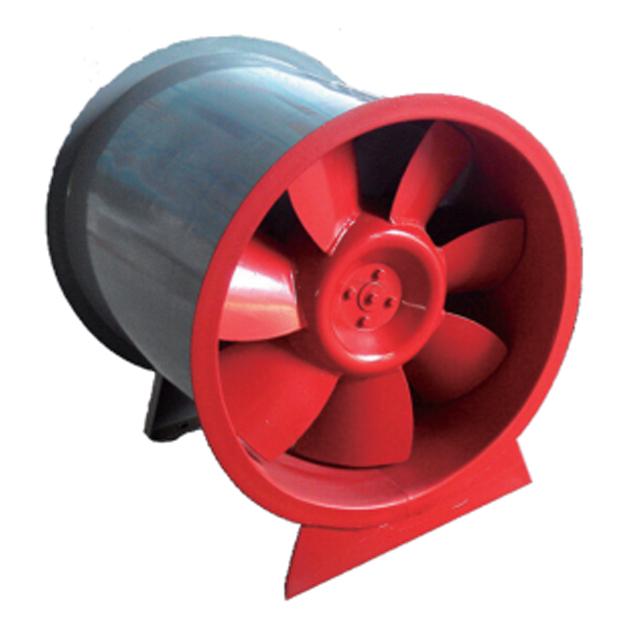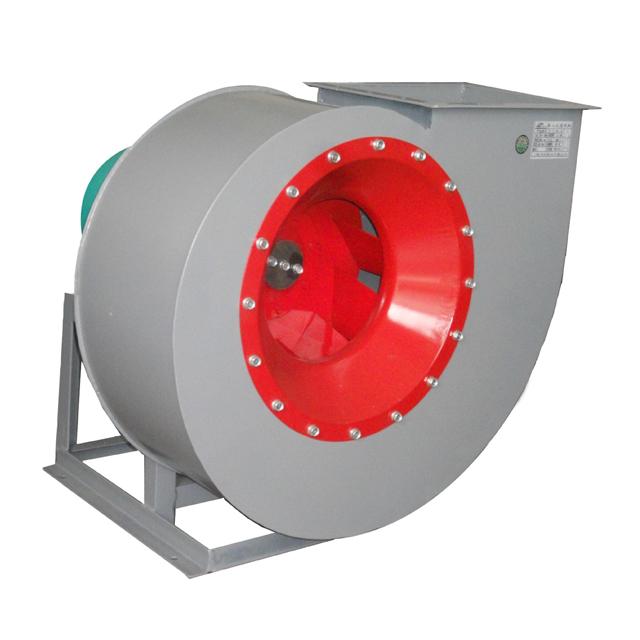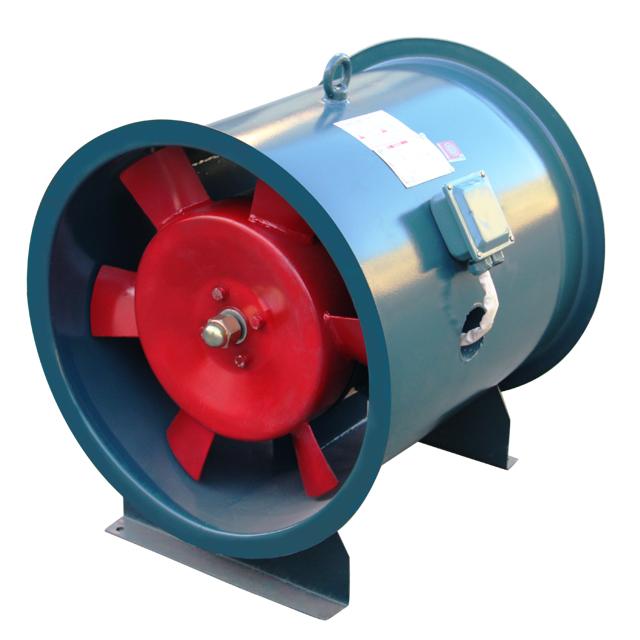Fire exhaust system: lifeline in a fire
Fire fighting and smoke exhaust system: a lifeline in a fire
1. Overview of the fire-fighting smoke exhaust system
1.1 Definition and composition of the smoke exhaust system
Fire fighting and smoke exhaust system is an indispensable part of the modern building safety system, which provides a valuable time window for personnel evacuation and fire rescue by effectively controlling the smoke generated by fire. According to the international fire safety standards, the smoke exhaust system is usually composed of key components such as smoke exhaust outlet, smoke exhaust pipe, smoke exhaust fan, control system and fire valve. The smoke exhaust system shall be designed to ensure that the smoke can be effectively discharged within the specified time after the fire occurs, so as to reduce the smoke concentration and improve the visibility of the evacuation path.
In practical application, the design and composition of the smoke exhaust system must take into account the use function, structural characteristics and fire risk level of the building. For example, due to the dense number of people in commercial buildings, the design of the smoke exhaust system needs to be more strict to ensure that the smoke can be quickly and effectively eliminated and ensure the safety of personnel. In public places, such as gymnasiums and theatres, etc., due to the open space, the design of the smoke exhaust system may adopt the combination of natural smoke exhaust and mechanical smoke exhaust, to achieve the best smoke exhaust effect.
In addition, the components of the smoke exhaust system must meet the corresponding technical standards and performance requirements. For example, the air volume and wind pressure of the smoke exhaust fan must meet a specific calculation model to ensure that sufficient smoke exhaust capacity can be provided in the case of fire. At the same time, the design of the control system needs to be able to monitor the smoke concentration in real time, and automatically adjust the operating state of the smoke exhaust equipment, in order to adapt to the different stages of fire development.
1.2 Importimportance of smoke exhaust system in buildings
In modern buildings, fire fighting and smoke exhaust system is the key facility to ensure the safety of personnel and the structural integrity of buildings. According to statistics, about 80 percent of the deaths in fires are caused by inhalation of toxic smoke, so smoke exhaust systems play a vital role in reducing smoke concentration and improving visibility. For example, in the 2017 Glenfair Tower fire in London, an improperly designed smoke exhaust system led to the rapid spread of fumes, causing heavy casualties. This event highlights the importance of smoke exhaust system in architectural design, and promotes the renewal and improvement of relevant specifications. Smoke exhaust systems must be designed to follow national and local fire regulations to ensure effective work in case of fire to buy valuable time for evacuation and rescue operations. In addition, the design of the smoke exhaust system should also consider the building's use function, personnel density and fire risk level to achieve the best smoke exhaust effect. In terms of maintenance and management, regular inspection and maintenance are the key to ensure the long-term and effective operation of the smoke exhaust system. Through scientific management and maintenance, the potential faults can be found and repaired in time, so as to ensure the reliability and effectiveness of the smoke exhaust system.
2. Working principle of the smoke exhaust system
2.1 Production and diffusion mechanism of smoke
In the case of fire, the generation and diffusion mechanism of smoke is the key factor in the design and implementation of fire exhaust system. Smoke is mainly composed of gases, tiny particles and water vapor produced by combustion. Its diffusion speed and range are affected by a variety of factors, including the size of the fire source, the nature of the combustion material, the layout of the building structure and ventilation conditions.
When designing the smoke exhaust system, the thermal buoyancy effect of the smoke must be considered, that is, the hot smoke is lighter than the cold air and will diffuse upward. This principle is widely used in the design of natural smoke exhaust system. By setting up the high smoke exhaust mouth, the natural rising force of thermal smoke is used to discharge smoke. At the same time, the mechanical smoke exhaust system forces the smoke exhaust through fans and other equipment to ensure that the smoke concentration is quickly reduced in the early stage of the fire and improve the safety of evacuation.
In the fire case analysis, we can see that the diffusion mechanism of smoke has a decisive impact on personnel evacuation and fire control. For example, in a fire case of a commercial building, the smoke quickly spread to the entire building, causing multiple casualties due to excessive smoke inhalation. This case highlights the importance of smoke exhaust systems in fires and the need for a deep understanding of the smoke diffusion mechanisms.
2.2 Workflow of the smoke exhaust system
In the case of fire, the workflow of fire smoke exhaust system is the key to ensure the safety of personnel and control the spread of the fire. First, the fire detector will immediately signal the fire to the fire control center. According to national standards, such as the response time specified in the Code for Fire Prevention for Building Design, the system must be started quickly in the early stage of fire. For example, the mechanical smoke exhaust system will quickly discharge the high temperature smoke and harmful gases outside through the exhaust fan and exhaust vent, thus reducing the smoke concentration and improving the visibility of the evacuation channel. The design of the smoke exhaust system should also consider the structure and function of the building to ensure that it can work effectively in different fire scenarios. For example, the natural smoke exhaust system uses the temperature difference and wind pressure difference inside and outside the building, and naturally discharges smoke through the roof or high smoke exhaust window, which not only saves energy and meets the environmental requirements. In terms of technology development, new smoke exhaust technologies such as intelligent smoke exhaust system can dynamically adjust smoke exhaust strategies according to the actual situation of the fire site through the integration of sensors and intelligent algorithms, and further improve the efficiency and safety of smoke exhaust.
3. Design requirements of the smoke exhaust system
3.1 National Standards and Specifications
When discussing the fire fighting and smoke exhaust system, the national standards and norms are the cornerstone of the design and implementation. According to the "Code for Fire Prevention in Building Design" GB50016-2014, the design of the smoke exhaust system must meet the specific building space and use function requirements, to ensure that the spread of smoke can be effectively controlled in the event of fire, to provide necessary conditions for personnel evacuation and fire rescue. For example, for high-rise buildings, the design of the smoke exhaust system should consider the thickness and temperature of the smoke layer to ensure that after the fire, the smoke layer will not quickly fall to the area of personnel activity, so as to ensure the clarity and safety of evacuation channels. In addition, the design of the smoke exhaust system should also follow the "Technical Standard for Building Smoke Prevention and Drainage System" GB50016-2014, which has clear provisions on the setting of the wind volume, wind speed and smoke outlet of the smoke exhaust system, so as to ensure the effect of smoke exhaust. In actual cases, such as the fire in 2010, due to the improper design of the smoke exhaust system, resulting in the rapid spread of smoke, resulting in heavy casualties. This painful lesson has prompted the relevant authorities to revise the relevant regulations and strengthen the supervision of the design of the smoke exhaust systems to prevent similar incidents from happening again.
3.2 Key factors in the design
When designing fire smoke exhaust system, the key factor is to ensure the effectiveness of the system. According to the national standards and specifications, the design of the smoke exhaust system must meet the specific performance requirements, such as the calculation method of smoke exhaust volume and the setting standard of smoke exhaust port clearly specified in the Code for Fire Prevention Design of Buildings. For example, for high-rise buildings, the smoke exhaust system must be designed to ensure that the smoke can be effectively discharged within a specified time to reduce the smoke concentration, improve visibility, and thus create conditions for evacuation and fire rescue. In the design, the use nature of the building, spatial layout, personnel density and other factors must also be considered to ensure the adaptability and effectiveness of the smoke exhaust system in different scenarios. For example, in commercial buildings, the smoke exhaust system should not only consider the efficiency of smoke exhaust in case of fire, but also take into account the beauty of daily operation and without affecting the customer experience. In addition, the design of the smoke exhaust system should also follow the principle of sustainable development to reduce the environmental impact, such as the use of energy-saving smoke exhaust equipment, to reduce energy consumption and carbon emissions. By considering these key factors comprehensively, a safe and economical fire fighting and smoke exhaust system can be designed to provide a reliable lifeline for the building.
4. The main type of smoke exhaust system
4.1 Mechanical smoke exhaust system
Mechanical smoke exhaust system is an important part of modern building fire safety. It forces the smoke produced by fire through mechanical force, so as to reduce the smoke concentration and improve the visibility of the fire site, so as to create favorable conditions for personnel evacuation and fire rescue. In practical application, the design of mechanical smoke exhaust system is also necessary to consider the use function of the building, space height, fire risk and other factors, to ensure the effectiveness and economy of the system.
In terms of maintenance and management, regular inspection and maintenance of mechanical smoke exhaust system is crucial. According to the requirements of the Maintenance and Management Regulations for Building Fire Fighting Facilities, the mechanical smoke exhaust system shall be comprehensively inspected at least every half a year to ensure the normal operation of key components such as smoke exhaust fans, air pipes and valves. During the inspection, special attention should be paid to the cleaning of the exhaust vent and the operation of the exhaust fan, because both dust accumulation and mechanical failure may lead to the failure of the smoke exhaust system.
Technological innovation is the driving force for the development of mechanical smoke exhaust system. With the progress of science and technology, new smoke exhaust technologies are constantly emerging, such as intelligent smoke exhaust system, efficient filtration and smoke exhaust system, etc. These technologies not only improve the efficiency of smoke exhaust, but also reduce the impact on the environment.For example, efficient filtration and exhaust systems can effectively remove harmful substances from smoke, protect the environment and protect the health of people. In the future, with the integration of the Internet of Things technology, the mechanical smoke exhaust system will be more intelligent and automated, and its role in fire prevention and control will be more significant.
4.2 Natural smoke exhaust system
Natural smoke exhaust system, as an important part of fire smoke exhaust system, its design and application play a vital role in fire safety. The natural smoke exhaust system uses the temperature difference and wind pressure difference inside and outside the building, and realizes the natural smoke emission by setting the smoke outlet on the top or side wall of the building. The design of the natural smoke exhaust system should consider the height, structure, use function of the building and the climatic conditions of the area, so as to ensure that the smoke concentration can be effectively reduced and the evacuation efficiency can be improved in case of fire occurrence.
In terms of technological innovation, the natural smoke exhaust system is developing in the direction of becoming more intelligent and more efficient. For example, by introducing intelligent sensors and control systems, the smoke concentration and temperature in the building can be monitored in real time, and the opening degree of the smoke vents can be automatically adjusted to adapt to different fire scenarios. This intelligent natural smoke exhaust system not only improves the efficiency of smoke exhaust, but also reduces the dependence on manual operation, and further guarantees the safety of the building. In the future, with the progress of science and technology and the improvement of environmental protection requirements, the natural smoke exhaust system will pay more attention to the combination of building energy conservation and environmental sustainability, to provide more comprehensive solutions for fire safety.
5. The role of the smoke exhaust system in the fire
5.1 Reduce the smoke concentration and improve the visibility
At the time of a fire, the rapid spread of smoke is one of the main causes of casualties and property damage. Many of the deaths in the fire are caused by inhalation of toxic fumes and gases. Therefore, the fire fighting smoke exhaust system plays a crucial role in reducing smoke concentration and improving visibility at the fire site. By quickly removing smoke and harmful gases generated by fire, the smoke exhaust system can not only provide a clear escape route for evacu, but also create favorable conditions for rescue operations of firefighters.
When designing smoke exhaust systems, national and local fire codes must be followed to ensure that the system can meet the smoke exhaust needs of specific buildings. The key factors of design include the calculation of smoke exhaust volume, the location and size of smoke vents, and the planning of smoke exhaust path. In addition, the smoke exhaust system should be designed to take into account the use function and personnel density of the building to ensure that the smoke concentration can be effectively reduced and visibility improved in emergency situations.
In practical applications, the effect of the smoke exhaust system can be evaluated by simulating fire scenarios. For example, using a computational fluid dynamics (CFD) model to simulate the diffusion of smoke during a fire can predict the performance of the smoke exhaust system in different fire scenarios. In this way, the design of the smoke exhaust system can be optimized to ensure that the system can effectively reduce the smoke concentration and improve visibility in the event of a real fire.
5.2 Control the spread of the fire and protect the safety of the structure
In the case of fire, the role of fire and smoke exhaust system is very important. By quickly removing smoke, it not only provides valuable time for evacuto escape, but also effectively controls the spread of the fire, so as to protect the safety of the building structure. The data showed that buildings equipped with efficient smoke exhaust systems reduced their smoke concentration by 40 percent and improved their visibility by 30 percent within 10 minutes after a fire, which significantly improved the rescue efficiency of firefighters and the chance of safe escape of people in the building. Smoke exhaust system is an indispensable part of fire safety design. By reducing the accumulation of smoke and heat, it gives firefighters valuable time to extinguish the fire, so as to avoid greater property losses and casualties.
In practical application, the design and maintenance of the smoke exhaust system must follow strict standards and specifications to ensure its effectiveness in fire. Standard smoke exhaust systems must be installed in all commercial buildings and public places. These systems often include key components such as smoke exhaust fans and smoke vents, which work together to ensure rapid initiation in the event of a fire.
The maintenance and management of the smoke exhaust system is also the key to ensure its maximum effectiveness in the fire. Regular inspection and maintenance can ensure the reliability of the smoke exhaust system at critical moments. The establishment of a perfect smoke exhaust system maintenance and management mechanism plays a significant role in controlling the spread of fire and protecting the safety of the structure.





